What To Expect
Though the Alpenzoo is widely advertised as the largest alpine zoo in the world its size is not impressive to people who have been to several other zoos. The Alpenzoo is not the largest zoo that you will see but it’s probably the most ecologically significant. It’s involved in a wide range of conservation programs like the alpine salamander monitoring program (a rapidly dwindling species), Wildcat platform, Alpine Bearded Vulture project etc. In fact, the Alpenzoo was the first organisation to breed the rare bearded vulture in situ back in 1974. The zoo is also involved in the Waldrapp project that aims to re-introduce this rare species through immigration.
Further, the Alpenzoo is involved in the re-insertion and introduction of the alpine ibex in the Alps. Even a couple of European bisons (the biggest animals in Europe) have been relocated to a natural reserve in Romania and ibexes have been released in Zillertal … examples of sustainable species upkeep and reintroductions.
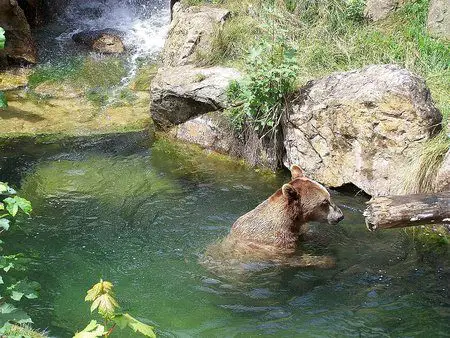
The zoo is built into the sides of a mountain and aims at providing a completely natural habitat. There are babbling brooks and shimmering streams, clumps of overgrown alpine flora, peaceful enclosures and landscaped (though completely natural-looking) terrain. Within the zoo grounds…there is a height difference of 100 meters and naturally seeing the entire place on foot will encourage visitors to walk uphill and be excursive a bit!!
History
The Alpenzoo is located at the foot of the Nordkette Mountains and was planned as a recreational zone for the city. It’s pretty old… it was built in 1460 by Christian Tanzi who was a famous citizen of Innsbruck. Royalty visits were common here… Emperor Maximilian was a guest here and so was Archduke Ferdinand II. The zoo got a massive makeover later and then reopened to the public on 22nd September 1962 with an air inspired from the renaissance gardens. There is a beaver enclosure at the entrance that’s a testament to the older fish ponds (these were called Weiher and they inspired the name Weiherburg).
The breeding and animal keeping methods of the zoo were highly appreciated and they were pioneered by Prof Han Psenner who is referred to as ‘Father of Alpenzoo’. It was the professor’s dream to open a zoo especially for Alpine fauna and he was 50 when the zoo finally opened.
There was no looking back after that as the zoo steadily became one of the leading attractions of Innsbruck. The Alpenzoo underwent a major makeover in the year 2000. The zoo expanded and now covers an area of 4.1 hectares and the Tyrolean government provided a lot of financial support to renovate enclosures and aviaries and to promote a modernistic approach to animal keeping.
There is a chance that you will see lots of local families walking towards the zoo from Innsbruck… it makes for a slightly long but pleasant walk from the city in case you don’t want to combine the zoo visit with the cable rail journey.
What To See & Do
Firstly, pause at the entrance and pick up the maps available. The map will be in German but there is a section detailing species information in English and Italian. Look at the animal icons and enclosure numbers… they will help you navigate.
Check out the animals and see that all permanent residents have been named, a bear couple (Ander and Martina) are two of the most popular residents. Martina a brown bear, is now one of the oldest residents (25 years old). Ander is only 6 and has been brought from Germany. 500 name suggestions from the public poured in for Ander when he moved here… a nice example of the local public’s involvement with the zoo. There are two bearded vultures named Romeo and Juliet and a wolf named Attila plus a 1000 kg bison named Hero.
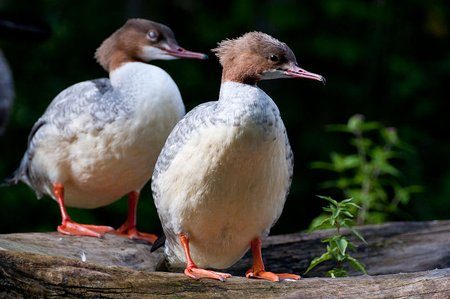
There is a Petting area modelled after a small farm here (Schaustall) that kids simply love… you will see cows, sheep, goats and pigs in close proximity here. It’s possible to touch and interact with these domesticated animals here.
The alpine flora and lovely presentation inside adds to the charm of this place which was built to showcase alpine species. There is a separate area for alpine mammals… small ones like bats, mice and shrew and the mammals like marmots, ibex and chamols. There are bisons that weigh up to 1000 kg.
The SUMSI world opened in 2018 and its purpose is to showcase the life cycle and activities of the bee. There are almost 700 types of bees in Austria and the SUMSI informs about their pollen collection activities, senses, life activities by information boards, video films and models. The information units have honeycomb-shaped structures. Honeybees have a separate section that shows the structure of hives, the language of honeybees and even the work role of the beekeeper. For kids, this is especially an educational section as they get to learn about the importance and role of honeybees as well as taste a bit of the honey!!!
Walkers and nature lovers will rejoice at the presence of the Geo Nature trail that provides insights into the structure and features of the alpine region, terrain, flora etc.
Aviaries are the highlight of the Alpenzoo and a number of them are brand new. A huge Zogg troller aviary has been established for griffon vultures and Egyptian vultures. The aviary is nearly 14m high and is spread across a 1000 sq. meter area. There is a separate walkthrough aviary where you can literally see a number of waldrapp ibis and other European birds sitting inside or flying unperturbed. Unlike other traditional aviaries which can only be observed from outside this one can be walked right into.
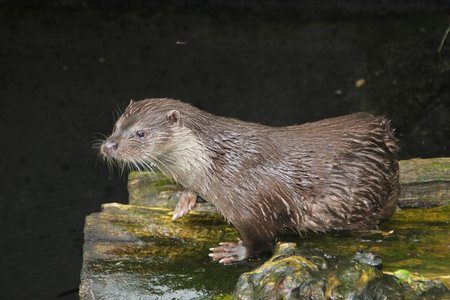
The highlight of the Alpenzoo seems to be its birds… there are a large number of them and they are housed spaciously. There is a walkthrough alluvial bird aviary and a big bearded vulture, crow and marmot aviary called Innergschlöß besides another separate complex for grouse, golden eagle and owl. It’s striking to see so many large birds of prey in one place and some of these species are rarely seen in zoos
The Alpenzoo has the biggest freshwater aquarium in the world with its 17 tanks that hold between 80 to 14,000 litres of water. It’s possible to observe about 50 species of Alpine fishes here and some of these are endangered. The most interesting aspect of the aquariums is their ability to recreate different habitats like an icy alpine river, small pond, lake and Danube alpine river like living conditions. The temperature of the water in the tanks is lowered to 4 to 6 degrees in winter and about 16 to 20 degrees in summer.
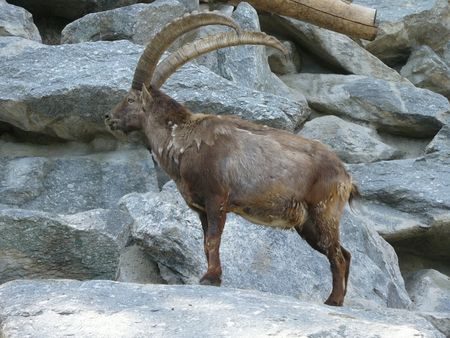
Note the Late Garda basin tank… water here is heated to 22 C with heating rods in order to recreate the natural environment. You will be able to observe longhorn, nose, pike, catfish, female avifauna, and brown trout etc. apart from other endangered species.
A visit to the Alpenzoo can be planned at any time of the year though some reptiles, amphibians and marmots remain in hibernation. In the spring season, the wide variety of birds begin their courtship antics and it’s interesting to watch. Lots of young animals are born in late spring i.e. May to June.
Kids love the Alpenzoo not only for the variety of fauna it hosts but also for the range of activities it offers. There is a large playground near the bear enclosure and a climbing wall that leads to Gelerwally’s Eagle Nest. There is also a special safe playground for very small kids and many seesaws and swings near the aviaries. Kids will not find a moment of boredom inside the zoo.
For older kids, the activities of the Zooschool may be of great interest. There are zoo pedagogues that offer interesting animal lessons with live animals and use a set of educational materials. The zoo school also offers training courses, exhibitions and library events. The zooschool is targeted not only at school children, kindergarten goers but also scholars of universities and colleges.
Lessons are imparted through worksheets, observation studies projects, courses, faculty papers and seminars. Topics range from simplistic ones like small animals, big animals, animal children and mothers to intermediate level ones like endangered species, animals of high mountains, cave builders and dwellers etc. to intensive ones like snakes of Tyrol and winter preparation. You need to take a prior appointment for learning at zoo school.
For a taste of what zoo school offers, download the free quizzes and try them!!
The zoo school is open from Monday to Friday (8 a.m. to 12 p.m.) and from Monday to Thursday (1 p.m. to 5 p.m.). For more details call + 43/512/29 23 23-16 or 29 23 23-17 or drop a mail at [email protected]
You can even get birthday parties organised at the Alpenzoo. There is a child-friendly menu of sausages, fries, toast, cake and beverages plus gifts and sweets. Kids supervision by trained staff will be arranged by the zoo authorities. This is one of the most popular venues around Innsbruck for planning birthday parties.
Cafe
Food and beverages are available in abundance inside the zoo… just walk into Animal / Bistro in Zoo. On offer are a selection of dainty savouries, desserts and beverages. The bistro is pretty spacious and has both indoor and outdoor seating.
Shop
There is a small shop selling Alpenzoo themed collectables, souvenirs etc. Notice the presence of IBEX (the zoo’s new mascot) everywhere in the signage besides the bearded vulture. The children’s backpacks with the cartoon mascot prints are especially endearing.
Best Time To visit
Spring is undoubtedly the best time to visit as you will get to see lots of adorable newborns. They are kept with their moms for some period of days before being moved to various zoos across the world though some are retained at Alpenzoo. If you are looking at the best time slot, noon is recommended as this is when animals become very interactive as they are served lunch.
NOTE
The Alpenzoo is perched on mountain slopes and some of the paths running through the zoo are pretty steep. It’s necessary to wear comfortable shoes and at least dedicate 1.5 hours to exploring the charms of the zoo. There are stairs that cut down on time but you will miss seeing the lovely landscaping. Most parts of the zoo are advertised as being accessible by wheelchair but it’s clearly not possible for people with reduced mobility to navigate terrain this steep.
Don’t expect to see a lot of animals but expect to see some very unusual animals… remember that this zoo is dedicated to only alpine species. Click away photos endlessly (you will probably need SLR cameras with zoom) if these animals are unfamiliar to you.
For obvious reasons, it’s not allowed to bring in dogs inside the Alpenzoo.
Ticket Booking
You can book your Alpenzoo ticket online from the link below:
Check Availability
Rate provided by Viator
There is free entry to the zoo for wheelchair users, tourist guides, kids under the age of 3 and for people holding the Innsbruck card. You can also get a combi ticket from Hungerburgbahn first station i.e. Congress. The combi ticket includes to/ fro ride between Congress and Alpenzoo via Hungerburgbahn section 1, Alpine Zoo entrance ticket and free parking in Congress/ City Garage.
The price of the combi ticket for adults is 15 euros and for teenagers (age 16 to 18) is 12 euros. Children (age 6 to 5) get an entry for 8 euros while kids (age 4 to 5) can get in for a 2 euro fee only. Babies below the age 4 can get in for free.
If you live nearby or travel to Innsbruck often then you can get an Alpenzoo membership for 50 euros. This will get you free all-year access, invites to special events, subscription to special newspaper and offers for trips.
How To Reach
The Alpenzoo is reachable by a 25-minute walk from Innsbruck old town. The path is well signposted.
Funicular: Most tourists prefer taking the Hungerburgbahn for Alpenzoo. Get down at the Alpenzoo stop and take the elevator/ staircase down to the road. You will find the zoo about 250 meters away but it’s an uphill walk.
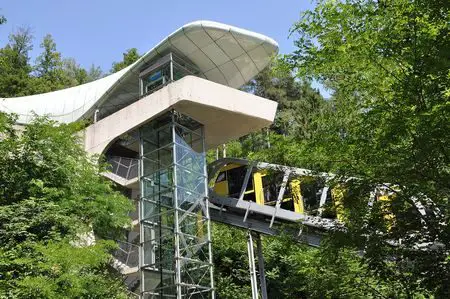
Bus: You can take the bus from the main station to market square disembarking at the market place and catching line W. This line starts at the marketplace and runs over to Alpine zoo crossing the Innstrabe Villa Blanka. The first bus starts off from Marktplatz at 6.30 a.m. and you will get a new bus every 30 minutes.
Car: You can also take your own car to the Alpenzoo. There is an entrance and exit via Weiherburggasse/ Richards Weg. Parking is free for people holding a disabled card. Others have paid parking. Parking for large coaches is arranged at Hofgarten. Parking charges are 20 cents per half an hour for the first 4 hours and then each extra half an hour costs 1 euro. You won’t need more than 3 hours to explore the zoo.
If you find exploring the zoo on foot tiring then book a HYPO Bärenmobil… just pay a 3 euro fee and board this high terrain compatible sturdy vehicle which will take you around accompanied by a guide. 5 people can sit in it max and prior reservation is required.
Address & Contact details
Alpenzoo Innsbruck
Weiherburggasse 37, A-6020 Innsbruck
Phone: +43(0)512 – 29 23 23; Email: [email protected]; Website
Once you are done exploring Alpenzoo, you must have worked up a robust appetite. There is Villa Blanka (serves central European cuisine) and Alfred Millers Schoeneck (Michelin starrer) within 300 meters of the zoo. You will get Indian food at Innstrasse and French/ German food at Panorama restaurant on Rennweg.
Many tourists prefer visiting the Dom St Jakob and the Hofgarten on the same day as Alpenzoo as they are all within a 1.5 km radius. But the best thing to do would be to combine the Alpenzoo experience in the Innsbruck Nordkettenbahnen ride provided you want to go up to the mountain.
 A travel addict. Still celebrating the day when he quit his high-profile corporate job to pursue his passion for travel writing.
A travel addict. Still celebrating the day when he quit his high-profile corporate job to pursue his passion for travel writing.